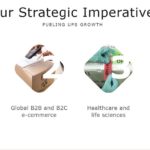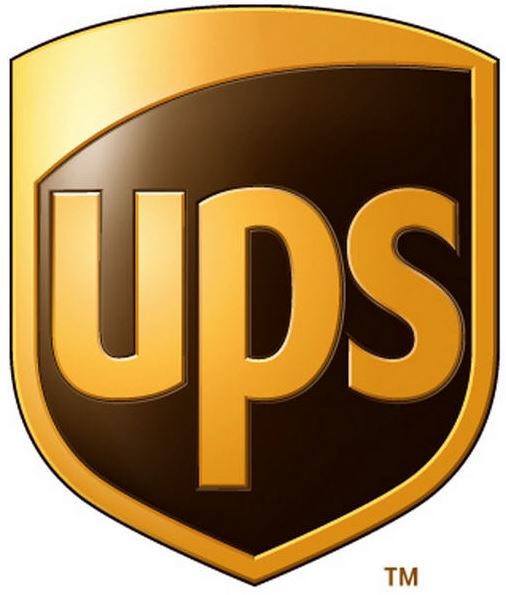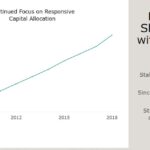Contents
Summary
- UPS reported Q4 and FY2018 results on January 31, 2019 and provided guidance for FY2019.
- In FY2018, UPS generated $6.1B of Free Cash Flow, reinvested $6.6B into its global network, and returned $4.2B to shareowners through $1B in share repurchases and $3.2B in dividends.
- In September 2018 UPS held its 2018 Transformation Conference in which it outlined to the investment community its 4 Strategic Imperatives and how it intends to transform and enhance its business strategy to boost future earnings.
- I am of the opinion UPS is taking the appropriate measures to become increasingly efficient in an effort to fend off Amazon.
Introduction
With United Parcel Service (NYSE: UPS) having released its Q4 and FY2018 results on January 31st and a dividend increase likely to be announced the first week of February I am taking this opportunity to analyze the company to determine whether this is an opportune time to add to my existing exposure.
2018 Transformation Conference
Before delving into UPS’s most recent results I will take this opportunity to touch upon UPS’s transformation and enhanced business strategy to boost future earnings which was presented to the investment community in September 2018.
At this conference UPS outlined its transformation initiatives based on the outlook for revenue quality improvement and operating cost reductions between 2018 and 2022. The outcome UPS expects to achieve is an incremental increase to adjusted EPS in the range of $1.00 - $1.20 by 2022.
The focus is on the following four strategic imperatives where UPS views itself as being well-positioned for profitable growth.
 Source: UPS – 2018 Transformation Conference – September 13 2018
Source: UPS – 2018 Transformation Conference – September 13 2018
- Continued expansion of high-growth international markets where UPS efficiently connects domestic and export customers to its global network;
- Profitable expansion from both B2B and B2C e-commerce, as U.S. industry package revenue is expected to grow by 40% from 2017 to 2022, and crossborder e-commerce volume is expected to grow by 28% over the next three years;
- Further penetration of the Healthcare and Life Sciences logistics market given the increasing shift toward home healthcare;
- Enhancing services and value for Small- and Medium-sized businesses. UPS is repositioning its commercial and service strategies to help this growing economic segment reduce logistics complexity and costs and to take advantage of UPS-offered technology platforms.
This business strategy includes continued capital investment in UPS’s vast global network. New and renovated facilities, aircraft and fleet assets will be coming online at record levels during the next four years.
Within the next couple of years, UPS will add 350,000 - 400,000 pieces per hour of sorting capacity in the U.S. on an annual basis. This is about 7 times the additional sorting capacity added in 2017.
Presently, nearly 50% of UPS’s nearly 35 million sorted packages per day are processed using new more-automated facilities. When this phase of UPS’s Global Smart Logistics Network enhancement is completed by 2022, 100% of eligible volume in the U.S. will be sorted using these new more highly automated sites.
Seven new ‘super hub’ automated sorting facilities will be opened in the next few years with 30-35% higher efficiency than comparable less-automated facilities. In addition, more than 70 expansion projects will be implemented during this period.
In the past couple of years UPS has significantly increased total International capacity having allocated much of the added volume to higher-margin export and premium services.
In addition, intercontinental air express capacity has risen more than 10% as new, higher capacity cargo jets are being added to the fleet.
UPS has also completed about 66% of its previously announced European network expansion. This includes the new 'super-hubs' in Paris and London and several other new sorting and delivery facilities throughout the region.
One of the main elements of UPS’s company-wide drive for efficiency is the use of common processes and leveraging scale to reduce procurement and operating costs. UPS is also using technology to streamline back-office activities and is outsourcing certain transactional activities and broadening spans of control within management for greater overall efficiency.
Seven different segments of management’s presentation can be accessed here. I cannot possibly cover all the material presented in this article and encourage you to review the material for more detailed information.
Q4 and FY2018 Results
UPS’s most recent results can be accessed here.
In FY2018, total revenue increased 7.9% to $71.9B and full-year diluted EPS totaled $5.51. Adjusted diluted EPS of $7.24 which excludes the impact of the Mark-to-market pension charge and Transformation costs was also achieved.
UPS continues to generate strong Free Cash Flow (FCF). In fiscal 2013 – 2018, UPS generated $5.239B, $3.398B, $5.051B, $3.508B, $3.573B, and $6.1B in FCF.
FY2019 Guidance
- UPS expects total adjusted operating profit growth in the low-teens with all segments up double-digits.
- Adjusted diluted EPS of $7.45 - $7.75 includes pension financing costs headwinds of about $0.325B.
- UPS’s 2019 effective tax rate should be 23% - 24%.
- The plan is for CAPEX to be 8.5% - 10% of 2019 consolidated revenue.
- Transformation charges are excluded from guidance.
Pension Mark to Market
Every year UPS provides the investment community with an update on its efforts to de-risk its pension obligations. This includes:
- The active management of UPS’s pensions to assure sustainability for employees, improve predictability, balance operating expense, cash and balance sheet, and minimize risk;
- Looking for opportunistic ways to lower long-term risk;
- Evaluating options to control cost & minimize volatility;
- Working with Congress, the Administration and stakeholders to find fair and equitable funding solutions for the multiemployer plan system;
- The use of all options to protect UPS’s interests and to advocate for UPS employees.
During Q4, UPS recorded a non-cash, after-tax, mark-to-market pension charge of $1.2B. This charge includes the effects from lower-than-anticipated asset returns, partially offset by higher discount rates. It also includes a partial liability from the performance of The Central States Pension Fund.
In the prior-year period, UPS recorded a non-cash, after-tax, mark to market pension charge of $0.607B. That charge resulted from lower discount rates, partially offset by higher asset returns.
A copy of UPS’s Mark-to-Market Presentation is available for Q4 2016, Q4 2017, and Q4 2018.
Competition from Amazon
While UPS has a highly diversified customer base and no single customer accounts for more than 10% of its consolidated revenue, there is no denying that Amazon (AMZN) poses a threat to UPS. In Item 1A ‘Risk Factors in UPS’s 2017 10-K (page 11 of 146), UPS acknowledges that "changes in our relationships with our significant customers, including the loss or reduction in business from one or more of them, could have an adverse impact on us."
UPS does not specifically name Amazon but the third point under Risk Factors states that some of its large customers might account for a relatively significant portion of revenue growth. In talking about risk to its own business UPS even speculates that these customers could take their volume elsewhere, demand lower prices or develop their own shipping and distribution capabilities.
UPS recognizes the risk of AMZN becoming a formidable competitor and in my opinion is taking the appropriate course of action to fend off Amazon.
Credit Ratings
UPS’ long-term debt credit rating from Moody’s was lowered from Aa3 to A1 in October 2016. There has been no subsequent change to this rating.
S&P assigned an A+ rating in September 2012 and this rating is still in effect.
Both ratings are the top tier of the upper medium grade credit rating and are satisfactory for my purposes.
Valuation
When I wrote my February 2, 2018 article, UPS had just reported 2017 diluted EPS of $5.61 and adjusted diluted 2017 EPS of $6.01. Management also announced FY2018 adjusted diluted EPS guidance of $7.03 - $7.37.
UPS was trading at ~$119.50 thus giving us a PE of ~21.3 and an adjusted PE of ~19.9. On the basis of the 2018 adjusted diluted EPS guidance I arrived at a forward adjusted PE range of ~16.21 - ~17.
Now that UPS has reported FY2018 diluted EPS of $5.51 and adjusted diluted EPS of $7.24 let’s see how its current valuation stacks up with that at the beginning of 2018.
Using the January 31st $105.40 stock price we arrive at a diluted PE of ~19.13 and an adjusted diluted PE of ~14.56.
Using UPS’s adjusted diluted EPS guidance of $7.45 - $7.75 and the current stock price we arrive at a forward adjusted diluted PE range of ~13.6 - ~14.15.
UPS’s current valuation is more attractive than at the time of my previous analysis.
UPS’s dividend history can be found here. While the current $3.64 annual dividend provides investors with a ~3.45% dividend yield based on January 31st $105.40 stock price, I expect UPS to announce a dividend increase next week.
UPS - Rewarding Shareholders With Generous Dividends
Source: Financial Benefits of Transformation - Richard Peretz - September 13 2018 Transformation Conference
With the average annual growth rate being 10% I anticipate that the imminent dividend increase will result in the new annual dividend being $4.00. This would provide investors with a ~3.8% dividend yield when we use the current $105.40 stock price.
On the basis of FY2018 diluted EPS of $5.51 we see that the current $3.64 annual dividend represents 66% payout ratio. UPS’s historical payout ratio has fluctuated widely with the annual dividend having exceeded EPS by a wide margin in FY2012.
For comparison purposes I provide the dividend payout ratio for FY2014 – FY2017: 65.4, 65.5, 54.7, and 80.2. Based on recent historical levels the current 66% payout ratio does not seem out of line.
As at FYE 2013 - 2018 UPS’ weighted average diluted shares outstanding amounted to (in millions of shares) 948, 924,906, 887, 875, and 870. By comparison, UPS’s weighted average diluted shares outstanding in FY2003 amounted to 1,138 million shares.
Final Thoughts
I view UPS as currently being fairly valued but I am reluctant to acquire additional shares since I am of the opinion that conditions are ripe for another pullback similar to that of December 2018 at which time UPS dropped as low as ~$90; in hindsight I should have acquired a few more UPS shares but I missed the opportunity.
Should UPS’s share price retrace to the low $90s I will likely acquire additional shares unless a broad market pullback results in other companies being more attractively valued.
I wish you much success on your journey to financial freedom.
Thanks for reading!
Note: I sincerely appreciate the time you took to read this article. Please send any feedback, corrections, or questions to [email protected].
Disclaimer: I have no knowledge of your individual circumstances and am not providing individualized advice or recommendations. I encourage you not to make any investment decision without conducting your own research and due diligence. You should also consult your financial advisor about your specific situation.
Disclosure: I am long UPS.
I wrote this article myself and it expresses my own opinions. I am not receiving compensation for it and have no business relationship with any company whose stock is mentioned in this article.



